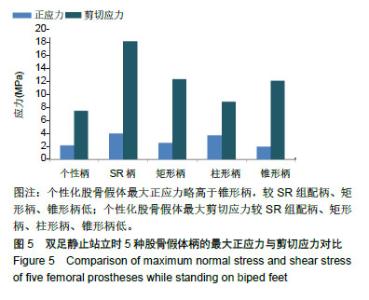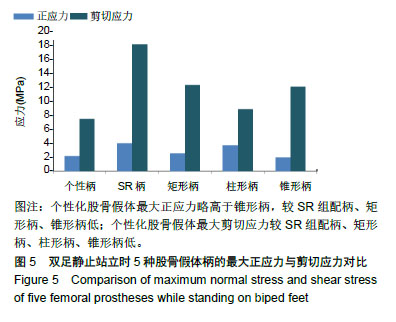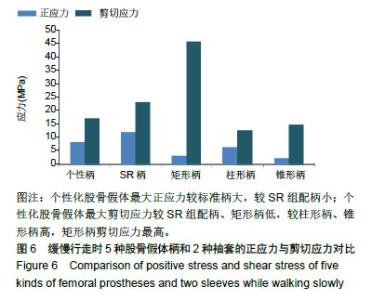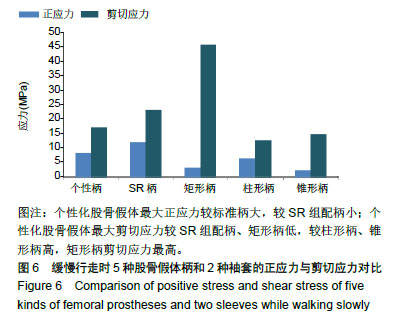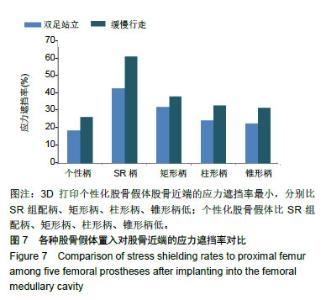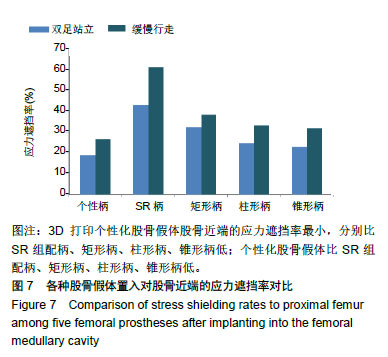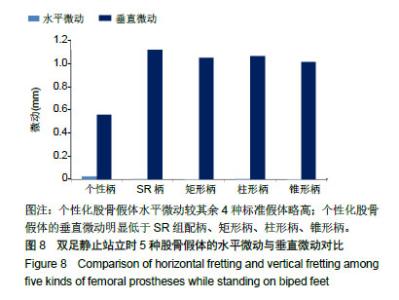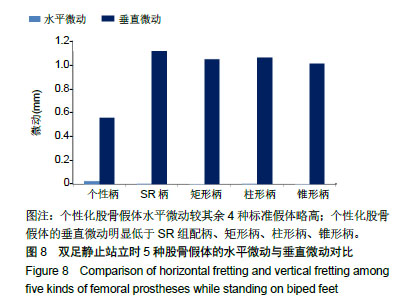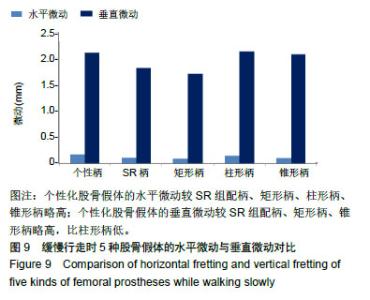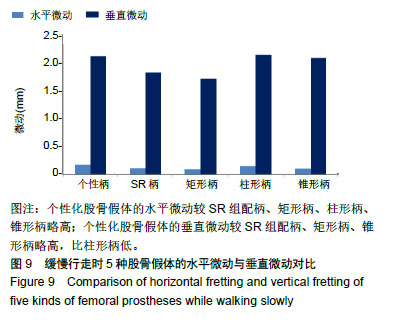| [1]Tsiampas DT, Pakos EE, Georgiadis GC, et al. Custom-made femoral implants in total hip arthroplasty due to congenital disease of the hip: a review. Hip Int. 2016; 26(3):209-214.[2]Al-Khateeb H, Kwok IH, Hanna SA. Custom cementless THA in patients with Legg-Calve-Perthes disease. J Arthroplasty. 2014;29(4):792-796.[3]Hitz OF, Flecher X, Parratte S, et al. Minimum 10-year outcome of one-stage total hip arthroplasty without subtrochanteric osteotomy using a cementless custom stem for crowe iii and iv hip dislocation. J Arthroplasty. 2018;(4):1-6.[4]Tischler EH, Hansen E, Austin MS. A custom trabecular metal implant in revision total hip replacement with a paprosky type-iv femoral defect: a case report. JBJS Case Connect. 2014; 4(4): 103.[5]刘宏伟,翁益平,张云坤,等.计算机辅助设计及电子束熔融快速成型金属3D打印技术制备个性化股骨假体[J].中国修复重建外科杂志,2015,29(9):1088-1091.[6]冯辰栋,夏宇,李祥,等.3D打印多孔钛支架微观孔隙结构和力学性能[J].医用生物力学, 2017,32(3):256-260.[7]Eldesouky I, Harrysson O, Marcellin-Little DJ, et al. Pre-clinical evaluation of the mechanical properties of a low-stiffness cement-injectable hip stem. J Med Eng Technol. 2017;41(8):681-691.[8]魏崇斌,马骏,王彩梅,等.电子束熔融法制备的医用Ti6Al4V在人工模拟体液中的耐腐蚀行为[J].生物骨科材料与临床研究,2017, 14(4):6-10.[9]Stolk J, Verdonschot N, Cristofolini L, et al. Finite element and ex perimental models of cemented hip joint reconstructions can produce similar bone and cement strains in pre-c1inical tests. J Biomech. 2002; 35: 499-510.[10]严世贵,何荣新,陈维善,等.全髋关节置换前后股骨应力变化的有限元分析[J].中华骨科杂志, 2004,24(9):561-565.[11]Douglas RP,Richard AB,Dwight TD, et al. Pelvic muscle and acetabular contact forces during gait. J Biomech. 1997;30: 959-965.[12]唐刚,王建革,罗红霞.髋关节置换前后不同步态下股骨应力分布[J]. 医用生物力学,2015,30(2):143-147.[13]Koyano G, Jinno T, Koga D. Comparison of bone remodeling between an anatomic short stem and a straight stem in 1-stage bilateral total hip arthroplasty. J Arthroplasty. 2017; 32(2): 594-600.[14]Drosos GI,Touzopoulos P. Short stems in total hip replacement: evidence on primary stability according to the stem type. Hip Int. 2018:1317364643.[15]Pyburn E, Goswami T. Finite element analysis of femoral components paper III-hip joints. Mater Des. 2004;25(8): 705-713.[16]李宁远,龚亚莉,刘煊文,等.不同材料人工髋关节假体对骨界面应力分布及生物力学的影响[J].中国组织工程研究,2016,20(9): 1268-1274.[17]尚晓峰,窦坚,韩青.基于Abaqus下植入体与股骨腔配合的有限元分析[J].临床骨科杂志,2018,21(3):373-375.[18]Chanda S, Gupta S, Kumar PD. A genetic algorithm based multi-objective shape optimization scheme for cementless femoral implant. J Biomech Eng. 2015;137(3):1124-1136.[19]Mu JJ, Sang KC. Analysis of stress distribution around total hip stems custom-designed for the standardized Asian femur configuration. Biotechnol Biotechnol Equip. 2014; 28(3): 525-532.[20]Peng MJ, Chen HY, Hu Y, et al. Finite element analysis of porously punched prosthetic short stem virtually designed for simulative uncemented hip arthroplasty. BMC Musculoskelet Disord. 2017;18(1):295.[21]邱玉坤,李小康,张涌泉,等.3种不同弹性模量钛合金股骨假体在羊股骨置换模型中应力分布的三维有限元分析[J].现代生物医学进展,2016,16(28):5414-5419.[22]Malfroy Camine V, Rüdiger HA, Pioletti DP, et al. Full-field measurement of micromotion around a cementless femoral stem using micro-CT imaging and radiopaque markers. J Biomech.2016;49(16):4002-4008.[23]Orlik J, Zhurov A, Middleton J. On the secondary stability of coated cementless hip replacement: parameters that affected interface strength. Medi Eng Phys. 2003; 25(10):825-831.[24]Engh CA, O'Connor D, Jasty M, et al. Quantification of implant micromotion, strain shielding and bone resorption with porous-coated anatomic medullary locking prosthesis. Clin Orthop. 1992; 285:13-29.[25]Buhler DW, Berlemann U, Lippuner K, et al. Three-dimensional primary stability of cementless femoral stems. Clin Biomech. 1997; (2):75-86.[26]Cilla M, Checa S, Duda GN. Strain shielding inspired re-design of proximal femoral stems for total hip arthroplasty. J Orthop Res. 2017;35(11): 2534-2544.[27]王彩梅,张卫平,王刚,等.电子束熔融快速成型技术在骨科植入物修复过程中的骨诱导能力[J].中国组织工程研究,2013,17(52): 9055-9061.[28]程文俊,勘武生,郑琼等. 3D打印钛合金骨小梁金属臼杯全髋关节置换术的短期疗效[J].中华骨科杂志, 2014,34 (8): 816-823.[29]夏志勇,马康康,李凯,等. 3D打印钛合金骨小梁金属臼杯?垫块在全髋关节置换翻修术中的应用[J].中国骨与关节损伤杂志, 2017,32(2):121-124.[30]王中汉,王辰宇,刘贺,等.3D打印钛合金孔隙支架骨长入影响因素的分析[J].中国组织工程研究,2016,20(52):7821-7828.[31]Al-Dirini RMA, Martelli S, O'Rourke D, et al. Virtual trial to evaluate the robustness of cementless femoral stems to patient and surgical variation. J Biomech. 2019;82:346-356. |
